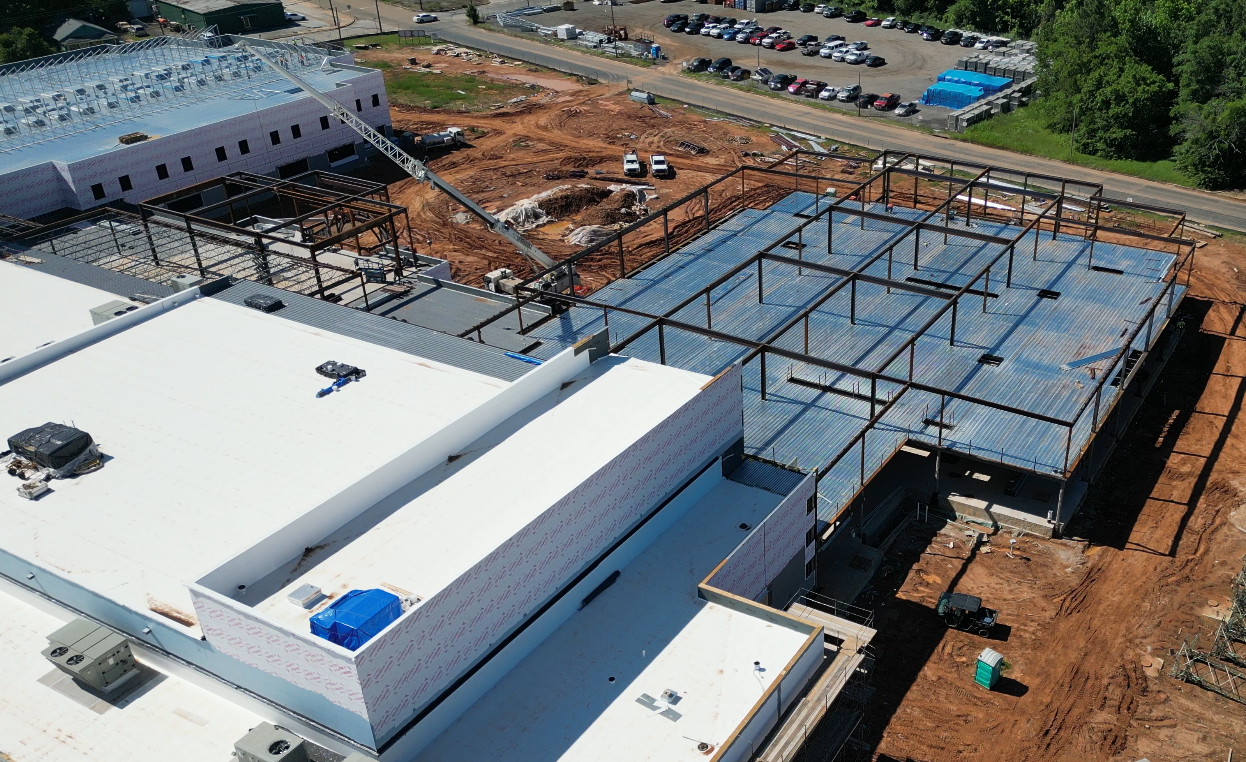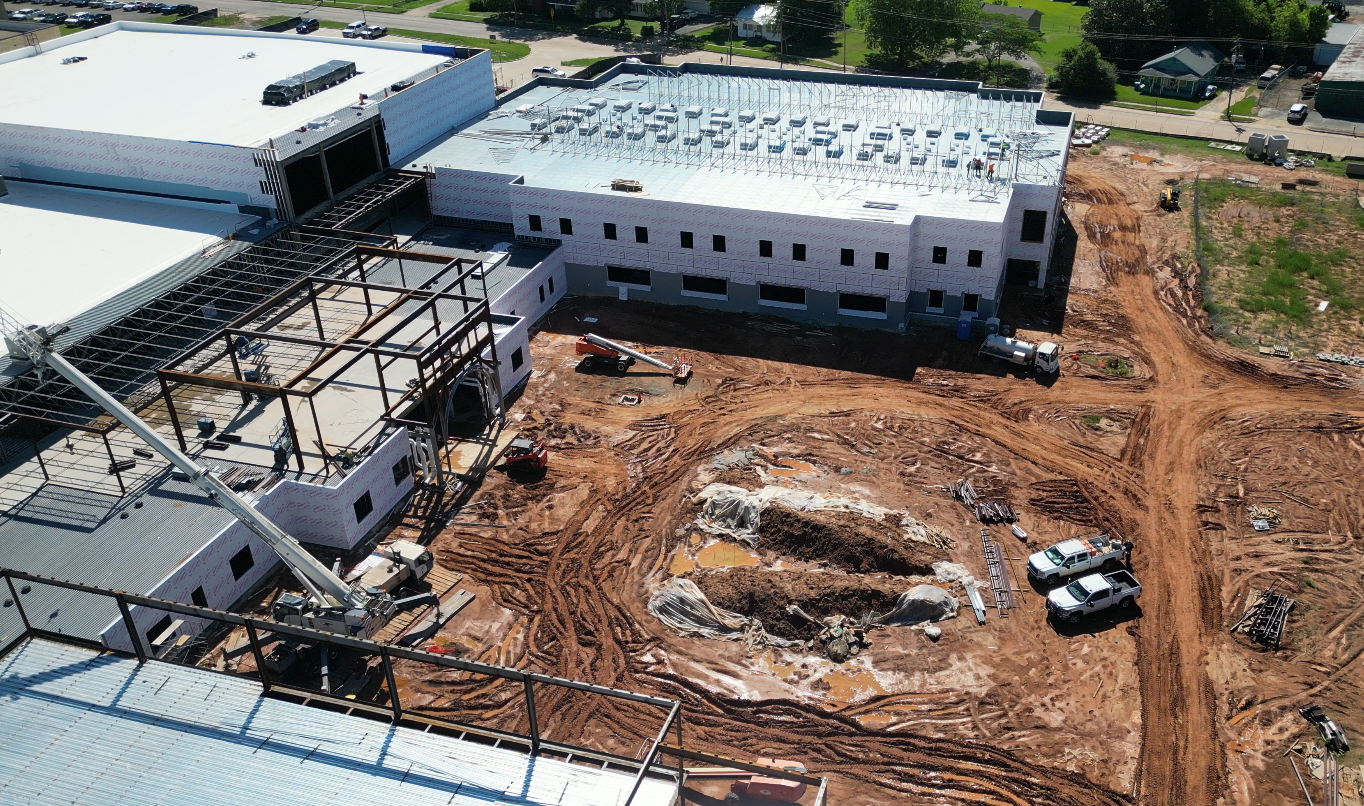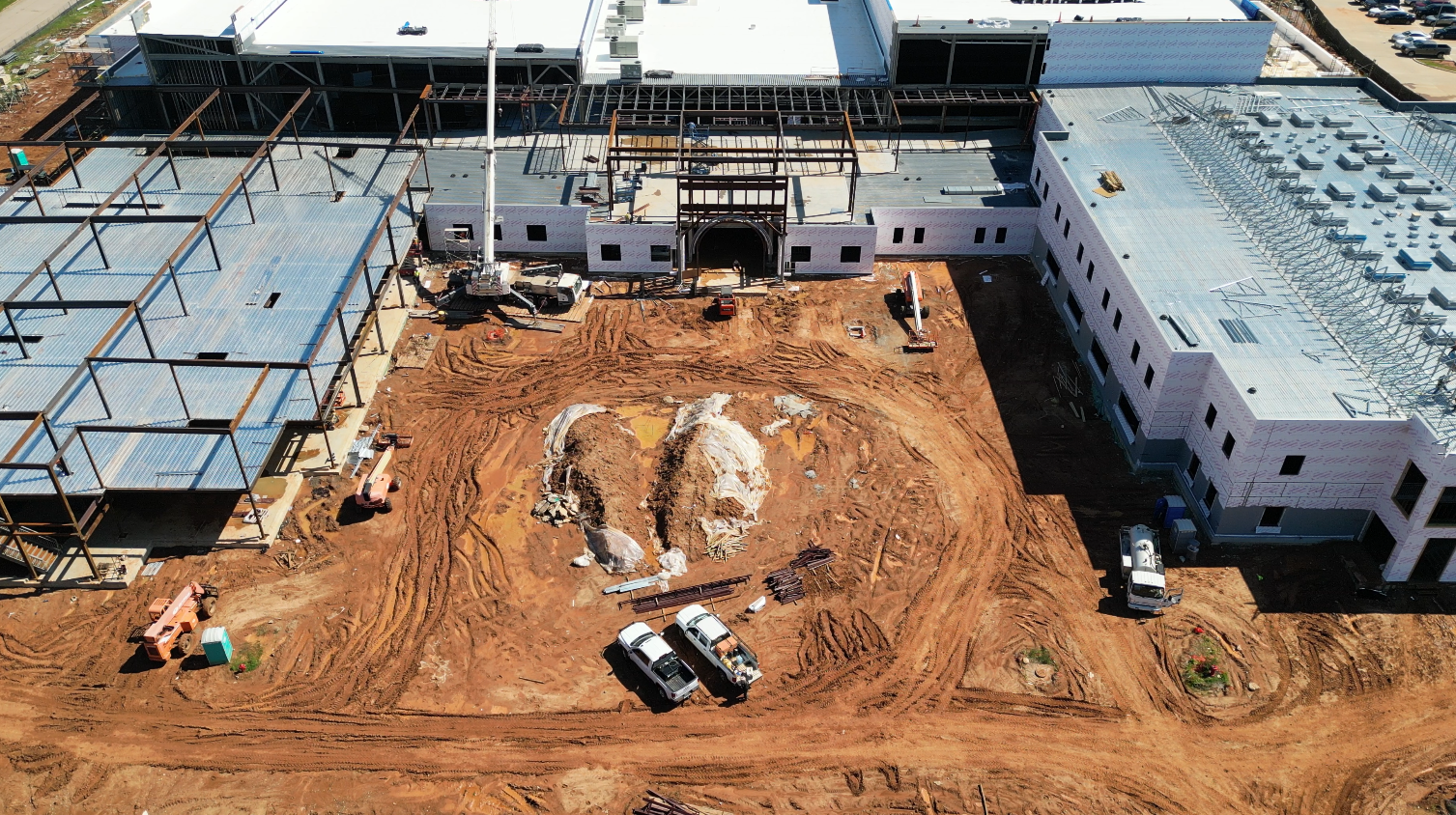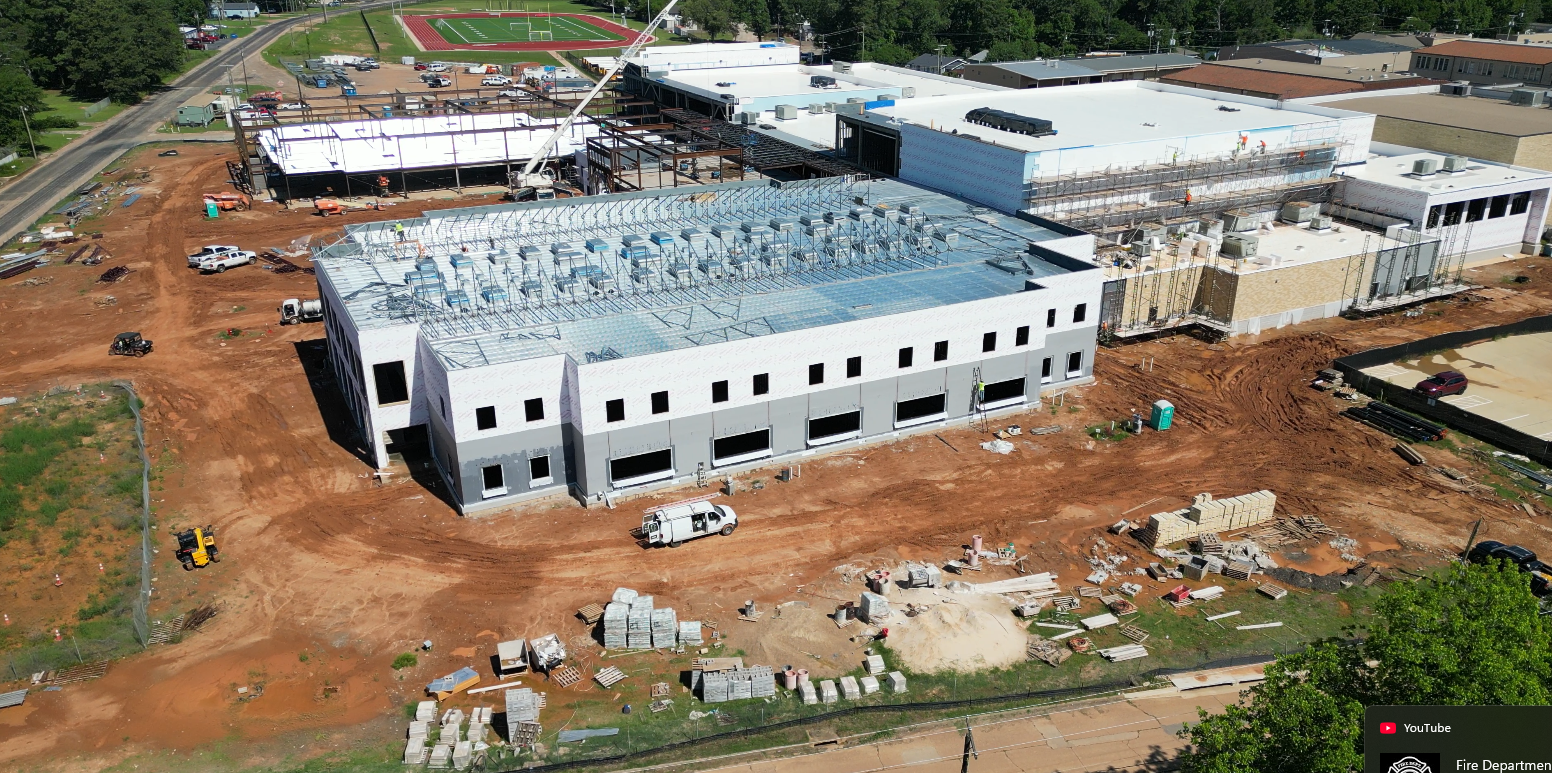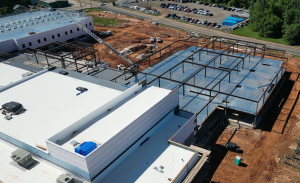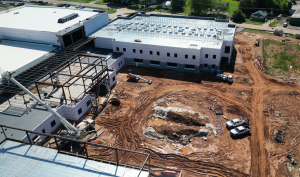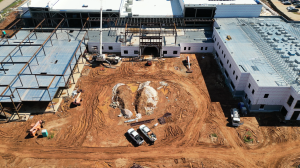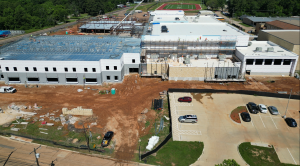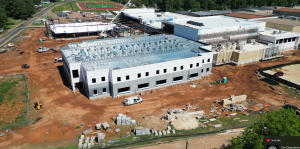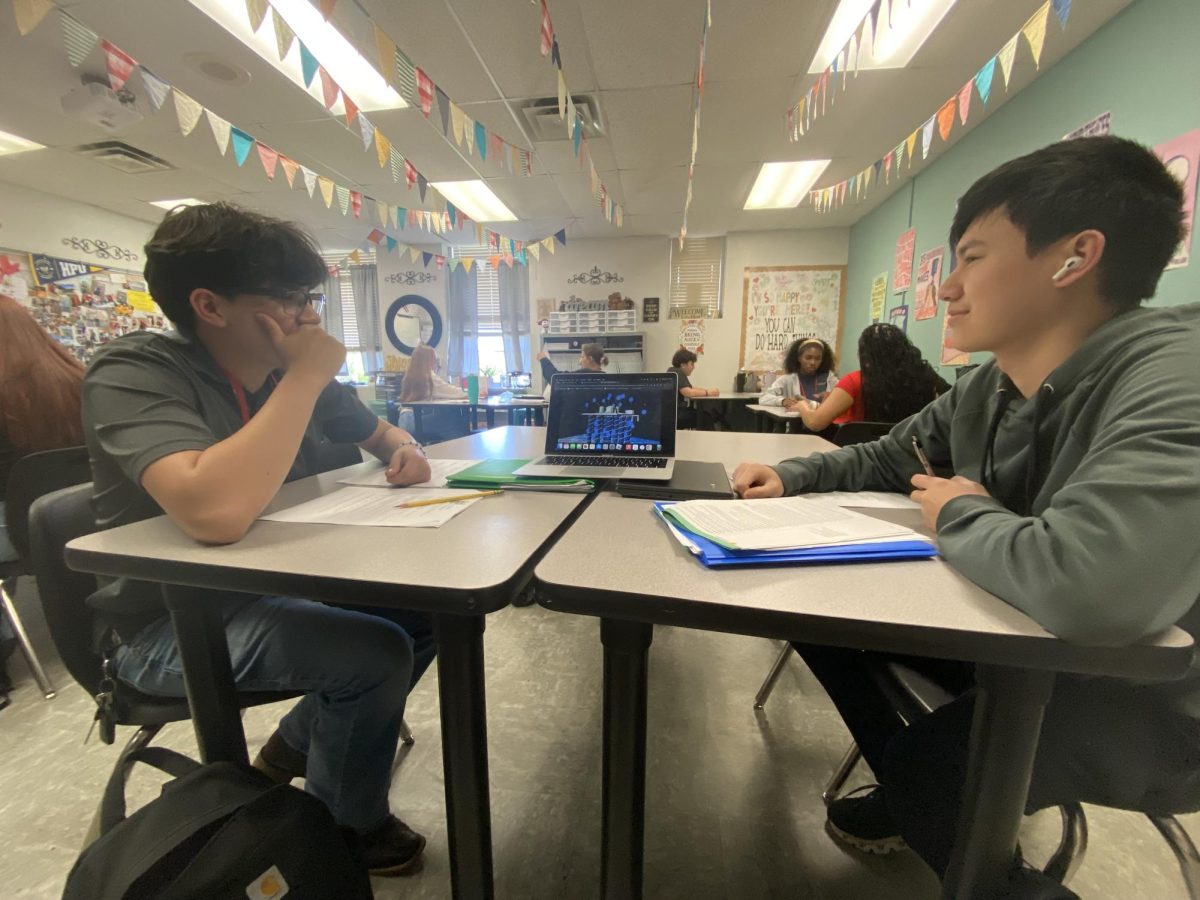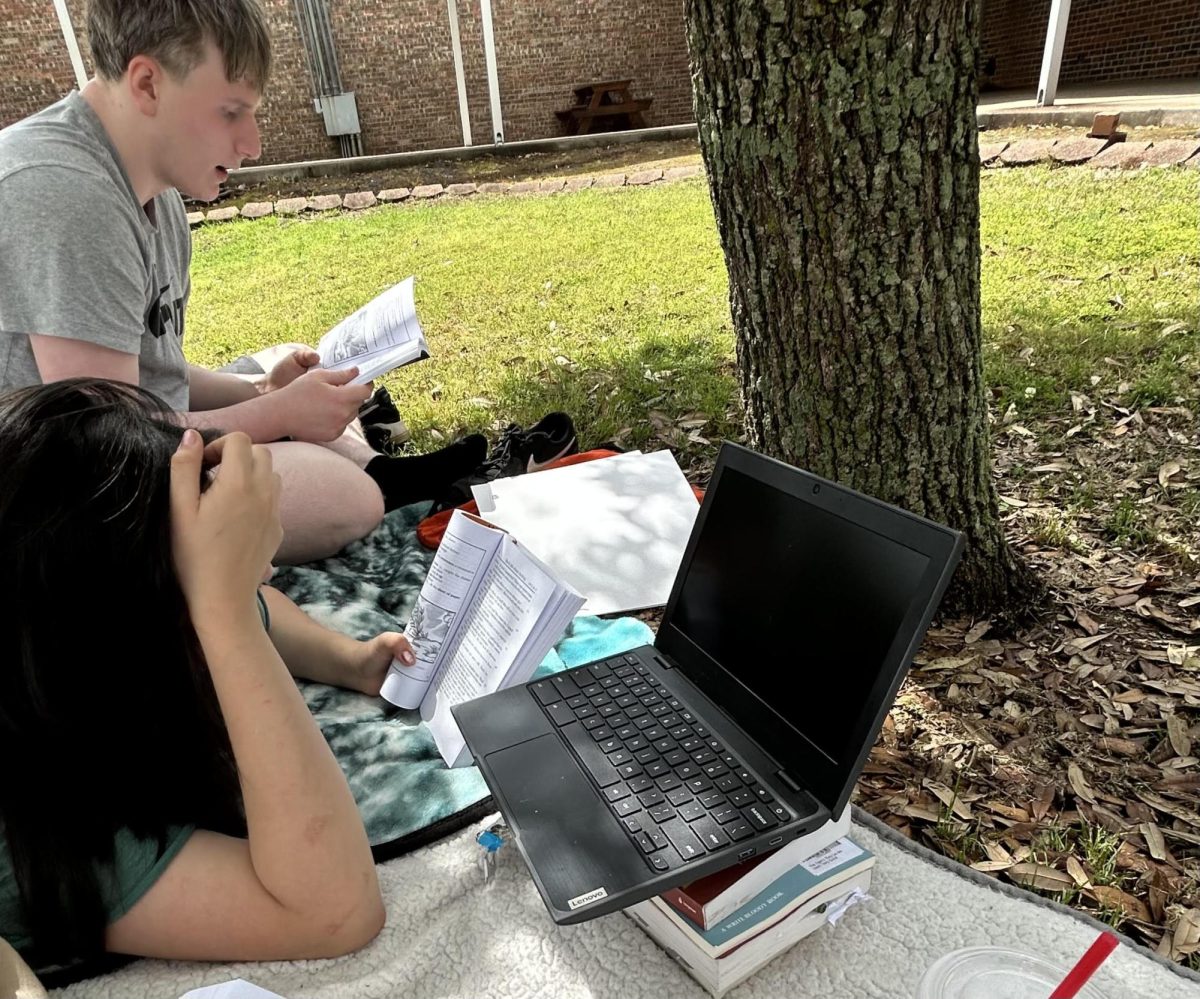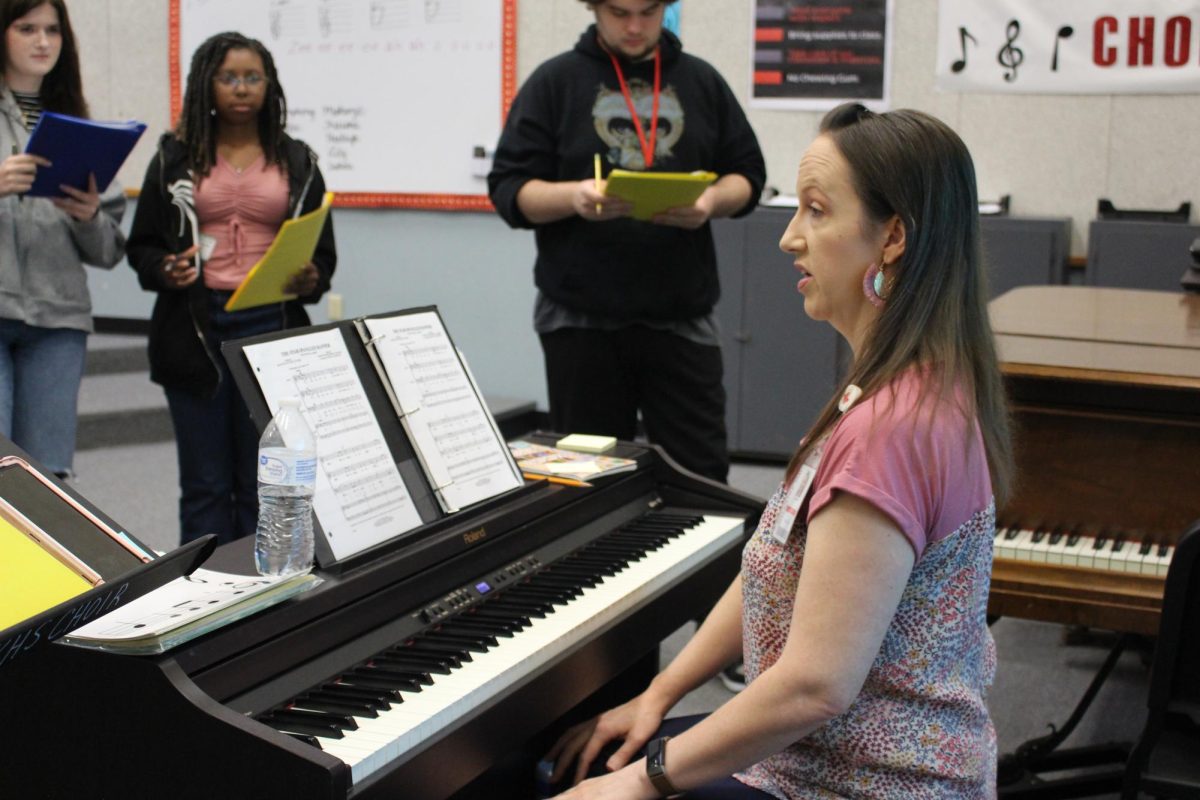When you take a look outside at the construction site, it’s a marvel at how much progress has been made. Take a step back and you’ll realize the amount of work completed since the first issue of this fine newspaper is astonishing.
“The new school will make learning better in a lot of ways,” Instructional Specialist Robin Jouglard said. “With more space and common learning areas, students will have places to work together on group projects and hands-on activities outside of the regular classroom. This will help build skills like creativity, teamwork, and problem-solving.”
Along with the increase in the space available for common-learning areas and students, the new building will include more up-to-date technology and network systems.
“The stronger and faster WiFi expected from new technology will make it easier to use online tools, do research, and access digital assignments without interruptions,” Jouglard said. “Overall, the new building should make it easier for teachers to use technology in lessons and give students more ways to stay engaged and learn in different ways.”
Obviously, adjusting to an entirely new school won’t be easy, especially moving into it. It’ll result in changes to the traffic flow, becoming familiar with the layout, difficulties with setting up the technology (new and old), and carrying a lot of the equipment such as supplies, instructional materials, personal items, etcetera from the current building into the new one.
“The biggest challenge will likely be the move itself,” Instructional Specialist Rebecca Baker said. “Moving teaching materials and personal effects to set up new learning spaces will be time consuming.”
In addition, one of, if not the most important development will be the rearrangement of emergency routes. New school, new layout, new plans in case of a disaster.
“Students should expect changes to emergency plans since we will be in a completely different facility,” Baker said. “They should also expect teachers to implement procedures and guidelines for utilizing the different types of learning spaces that are available in the new building.”
With that in mind, the central focus of this is taking the time to adjust. Not to rush things and wind up flying way off the deep end trying to cram so much into so little time.
“Teachers and staff will also need time to collaborate on how to best utilize new learning spaces, and rebuild routines that support consistency and efficiency,” Jouglard said. “While the transition brings excitement, it will require patience, flexibility, and strong communication among staff to ensure a smooth and successful adjustment.”
As time has passed, there have been concerns as to the development of the building. The original timeline scheduled the 2025-2026 school year to start in the new school, but unexpected delays from East Texas weather conditions have led to the grand opening hopefully taking place at the start of next year’s second semester.
“It will be, at the earliest, late 2027 before the project and its deliverables are one-hundred percent,” Dual Credit/Spanish 2 teacher Lovetta Williams said. “I’m sure that corners have been cut as the plans reveal limited storage space in working areas. I did not see an abundance of restrooms. Kids drink more now than they ever have in school – and it’s coffee! So they are ALWAYS going to the restroom, the stress of school trying to limit TikTok engagement is too much for them.”
Other concerns include mobility issues and the application of the newly improved teaching plans, however those have been resolved with elevators being built into each wing, the space being constructed with cross-curricular learning in mind, and less crowdedness in the classrooms.
“Once we move into the new school building, you can expect more opportunities for student engagement and teamwork,” Jouglard said. “The new school will have lots of open common areas where you can work with classmates on group projects, study together, or participate in interactive lessons outside of the traditional classroom. Teachers will be using more student-focused approaches, like hands-on activities, real-world projects, and cross-subject learning, to make lessons more meaningful and connected to student interests. The new building was designed to give students more creativity and more ownership in how they learn.”


